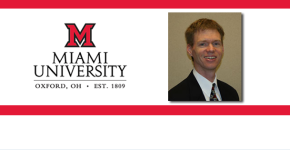Today on the Academic Minute, James Coyle, a associate professor of marketing and interactive media studies at Miami University, explains how advertisers can benefit the most from this important activity.
James Coyle received his PhD (1997) in Journalism (Advertising Studies) from the University of Missouri-Columbia. He holds a joint appointment in the Marketing Department at The Farmer School of Business and Armstrong Interactive Media Studies at Miami University. He sits on the editorial boards of the Journal of Business Research, the Journal of Interactive Advertising, and the Journal of Research in Interactive Marketing.
Advertising in the Social Media Age

Humans have an innate urge to share information. Because sharing increases our relevance with others, we are motivated to share important and interesting things as a way to maintain our social standing. The Internet has fantastically extended our ability to do that. With a click or two we can easily forward e-mails, news articles, videos, blog posts, tweets and Facebook posts to people in our social networks.
My colleagues and I tested this concept as it applies to advertising through survey research. We showed people two types of ads, business-to-business and business-to-consumer, to determine what might lead them to share information in the ads. In both cases, we found that people who were willing to share information in the ads were driven by how the ads made them think of others in their social networks.
The notion of what makes information useful has been completely changed by the Internet. In addition to self-relevance, timeliness and other traditional aspects of information importance, our research suggests that sharing has emerged as a vital component. Online content that cannot be easily shared is neither useful nor usable.
Therefore, marketers who understand how to benefit from pass-along, or sharing, behavior are at a distinct advantage. As part of the same research, we tested and used a scale meant to measure likelihood of sharing advertising information. The scale focused on the uniqueness and helpfulness of the information, the likelihood of the information helping to solve a problem, and whether the information increases mindfulness of others.
It is notoriously difficult to predict what kinds of online content will be shared. But our scale is an early attempt to measure the likelihood of this taking place, and could provide marketers with a new tool to pre-test what kinds of online content we are most likely to share in our social networks.



Comments
One response to “James Coyle, Miami University – Advertising in the Social Media Age”